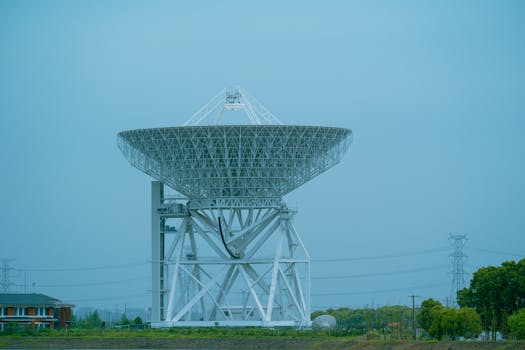The Future is Now: Exploring the Cutting-Edge Innovations in Satellite Telecommunications

The Future is Now: Exploring the Cutting-Edge Innovations in Satellite Telecommunications
Satellite Telecommunications, the future is now, and it’s more exciting than ever. The industry is witnessing a paradigm shift with the introduction of cutting-edge innovations that are transforming the way we communicate globally. In this article, we will delve into the latest advancements in satellite telecommunications, exploring the technologies that are shaping the future of this vital industry.
The demand for high-speed, low-latency connectivity is on the rise, driven by the increasing adoption of cloud services, big data, and the Internet of Things (IoT). Satellite telecommunications is poised to play a critical role in meeting this demand, particularly in areas where traditional fiber-optic connectivity is limited or non-existent. One of the key innovations driving this growth is the development of high-throughput satellites (HTS). These satellites offer significantly higher bandwidth and faster data transfer rates than traditional satellites, making them ideal for applications such as broadband internet, mobile networks, and maritime communications.
Another significant advancement in satellite telecommunications is the development of advanced antenna technologies. Phased array antennas, for example, use advanced beamforming techniques to dynamically shape and steer beams, allowing for more efficient use of spectrum and increased throughput. This technology is particularly useful for applications such as satellite-based 5G networks, where low latency and high-speed connectivity are crucial. Furthermore, the development of flat panel antennas has made it possible to create compact, low-profile antennas that can be easily integrated into small satellites, aircraft, and other vehicles.
Section 1: The Rise of High-Throughput Satellites
High-throughput satellites have revolutionized the satellite telecommunications industry, offering unprecedented levels of bandwidth and speed. These satellites use advanced technologies such as multiple spot beams, frequency reuse, and advanced modulation schemes to achieve higher data transfer rates. According to a report by NSR, a leading market research firm, the global HTS market is expected to reach $14.4 billion by 2027, driven by increasing demand for broadband internet, mobile networks, and maritime communications.
The introduction of HTS has also enabled the development of new applications and services, such as satellite-based broadband internet, mobile networks, and IoT services. Companies such as ViaSat, Intelsat, and SES are already offering HTS-based services, with many more expected to follow in the coming years. The use of HTS is also being explored for military communications, where secure, high-speed connectivity is critical for tactical operations.
Section 2: Advanced Antenna Technologies
Advanced antenna technologies are playing a vital role in the development of next-generation satellite telecommunications systems. Phased array antennas, for example, use advanced beamforming techniques to dynamically shape and steer beams, allowing for more efficient use of spectrum and increased throughput. This technology is particularly useful for applications such as satellite-based 5G networks, where low latency and high-speed connectivity are crucial.
The development of flat panel antennas has also made it possible to create compact, low-profile antennas that can be easily integrated into small satellites, aircraft, and other vehicles. These antennas use advanced materials and designs to achieve high gain and efficiency, while minimizing size and weight. Companies such as Kymeta and Phasor are already offering flat panel antennas for a range of applications, including satellite communications, radar, and electronic warfare.
Section 3: The Future of Satellite Telecommunications
The future of satellite telecommunications is exciting and full of possibilities. With the development of cutting-edge innovations such as HTS, advanced antenna technologies, and satellite-based 5G networks, the industry is poised to play a critical role in meeting the growing demand for high-speed, low-latency connectivity. According to a report by Ericsson, the number of satellite-connected devices is expected to reach 5.5 million by 2025, driven by increasing adoption of IoT, maritime communications, and mobile networks.
The use of satellite telecommunications is also being explored for a range of new applications, including smart cities, autonomous vehicles, and emergency response systems. The development of satellite-based 5G networks, for example, is expected to enable a wide range of new use cases, including ultra-high-definition video streaming, online gaming, and virtual reality. As the industry continues to evolve, we can expect to see even more innovative applications and services emerge, transforming the way we communicate and interact with each other.
In conclusion, the future of satellite telecommunications is now, and it’s more exciting than ever. With cutting-edge innovations such as HTS, advanced antenna technologies, and satellite-based 5G networks, the industry is poised to play a critical role in meeting the growing demand for high-speed, low-latency connectivity. As we look to the future, it’s clear that satellite telecommunications will continue to shape the way we communicate and interact with each other, enabling new applications, services, and innovations that will transform our world.




